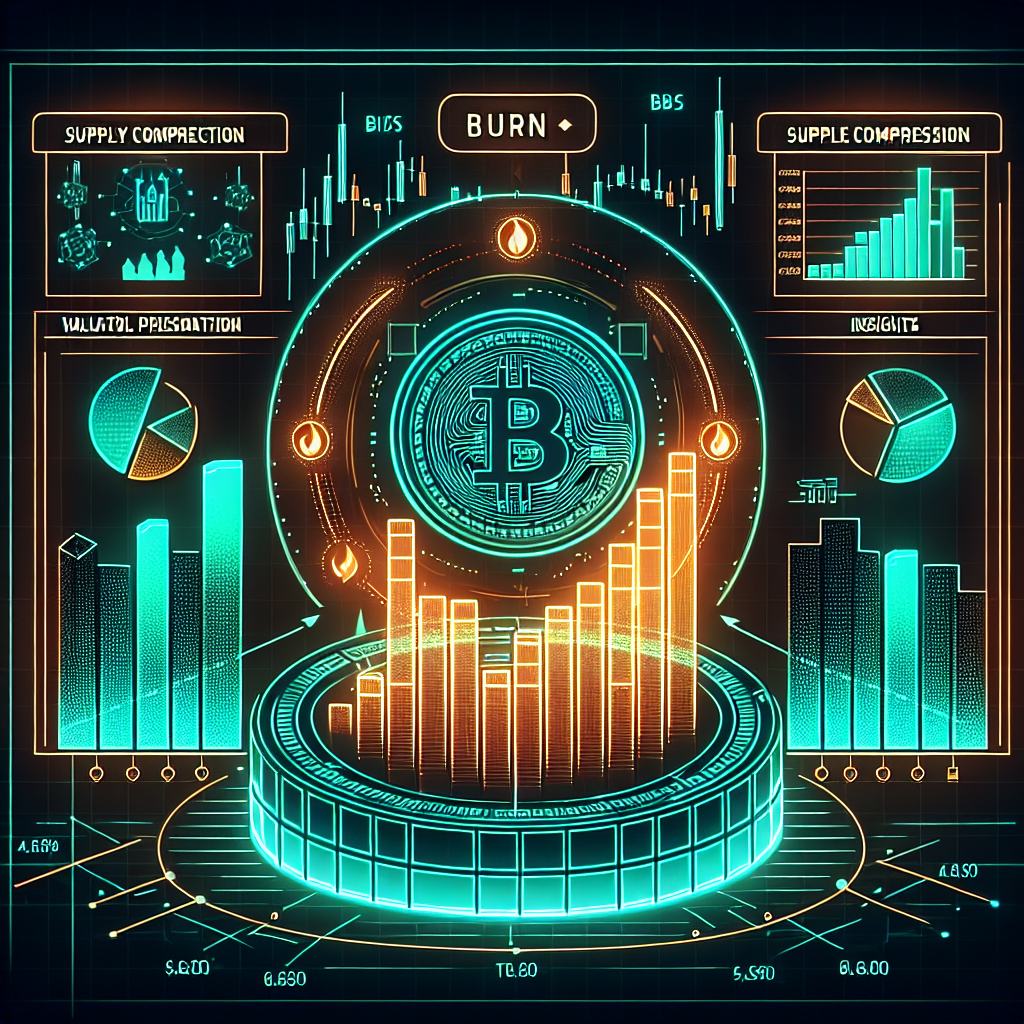Cryptocurrency Token Buyback and Burn Strategies: Supply Compression Effects, Valuation Impact, and Portfolio Positioning Insights

Introduction: Why Buyback and Burn Matters
In traditional equity markets, share repurchases reduce outstanding stock and can lift earnings per share. The crypto asset class has adopted a parallel technique known as “buyback and burn,” in which the issuing entity repurchases tokens on the open market and sends them to an inaccessible address, permanently removing them from circulation. With more than $50 billion in cumulative token burns across large-cap networks such as Binance Smart Chain, Ethereum, and Polygon, understanding the supply compression effects, valuation impact, and portfolio positioning implications is now essential for traders, analysts, and long-term investors.
Mechanics of Token Buyback and Burn
A buyback and burn cycle involves three discrete steps. First, the protocol, foundation, or decentralized autonomous organization (DAO) accumulates funds, often denominated in its native token or a reserve asset such as stablecoins. Second, the entity executes open-market or automated market maker (AMM) purchases, sometimes using algorithmic triggers tied to revenue. Finally, purchased tokens are sent to a verifiable “black-hole” address with no private key, ensuring permanent destruction. The entire sequence is recorded on-chain, providing transparent auditability that contrasts sharply with opaque corporate buybacks in legacy finance.
Supply Compression and Tokenomics 101
Every burn event lowers circulating supply, a core variable in the market-cap equation: Market Cap = Price × Circulating Supply. If demand remains constant while supply falls, simple economics imply upward pressure on price. Moreover, crypto markets frequently anchor on fully diluted valuation (FDV), and a decreasing supply can reduce token emissions relative to FDV, tightening float in secondary markets. Protocols such as Binance Coin (BNB) have committed to burning 100 million of the original 200 million supply, effectively engineering long-term scarcity akin to Bitcoin’s halving cycle.
Valuation Impact: Beyond Basic Supply Reduction
Although the arithmetic of fewer tokens equals higher price appears straightforward, the real valuation narrative is more nuanced. A burn financed from organic revenue—transaction fees, block rewards, or protocol income—signals healthy cash flow, comparable to dividend distributions. When buybacks are funded via treasury prints or token inflation, the market may discount their effectiveness because no external value is introduced. Analysts should adjust discounted cash-flow frameworks to include burn outlays as shareholder yield, combining fee-based dividends with repurchase magnitude for a holistic total return metric.
Event-Driven Volatility and Information Asymmetry
Just as earnings announcements spur stock volatility, burn schedules can catalyze sharp short-term price movements. Pre-announced burns often trigger anticipatory buying, creating a “sell-the-news” dynamic once the event is executed. Conversely, stealth burns conducted without prior notice can surprise the market, leading to exuberant short squeezes. Traders must monitor on-chain burn addresses in real time and leverage data terminals that flag anomalous token flows to capture alpha. Yet information asymmetry diminishes quickly because blockchain activity is publicly visible, compressing reaction windows relative to insider-driven equity buybacks.
Historical Case Studies
BNB’s quarterly auto-burn has coincided with a compound annual growth rate exceeding 100% since 2018, outpacing Bitcoin and Ethereum during several market cycles. Meanwhile, Terra Classic’s deflationary attempt to burn UST in May 2022 failed to stabilize its peg, underscoring that burn mechanics cannot rescue fundamentally flawed models. Ethereum’s EIP-1559 upgrade introduced a fee burn that has destroyed more than 3 million ETH, effectively offsetting issuance and turning the asset occasionally deflationary. These contrasting examples illustrate that successful burns must align with robust demand drivers and sound monetary design.
Risks and Limitations of Burn Programs
Buybacks financed from protocol reserves deplete strategic war chests that could otherwise seed ecosystem grants, liquidity incentives, or R&D spending. Additionally, aggressive burn rhetoric can create an unhealthy focus on short-term price appreciation, discouraging developer contributions and user growth. Regulatory scrutiny is another factor; securities regulators may view discretionary buybacks as manipulative if insider entities profit from price appreciation. Finally, deflationary tokenomics can inadvertently raise transaction fees as scarcity intensifies, reducing network usability, a phenomenon observed on Ethereum during high-congestion periods.
Portfolio Positioning: Practical Insights for Investors
Investors should segment burn strategies into three archetypes: (1) revenue-funded burns, (2) treasury-funded burns, and (3) algorithmic burns. Revenue-funded programs, such as those executed by centralized exchanges, align tokenholder incentives with platform profitability and deserve higher portfolio weightings. Treasury-funded burns are neutral at best because they simply reshuffle existing value; allocate tactically, using on-chain verification to avoid dilution risk. Algorithmic burns that rely on reflexive supply adjustments, like those attempted by failed algorithmic stablecoins, warrant extreme caution or outright avoidance. Position sizing should reflect not just burn magnitude but the sustainability of the funding source.
Strategic Entry and Exit Timing
Seasoned traders often front-run scheduled burns by accumulating positions when on-chain revenue spikes signal an upcoming event. Options markets, where available, provide leverage to amplify directional bets around burn announcements. Post-burn, consider trimming exposure as initial scarcity narratives decelerate and liquidity providers re-enter the market with fresh supply. Long-term investors, by contrast, may adopt a dollar-cost-averaging approach into deflationary assets, banking on the compounding effect of continuous burns rather than episodic price pops.
Conclusion
Token buyback and burn strategies have evolved from marketing gimmicks into sophisticated capital-allocation tools that can materially influence price, valuation, and portfolio construction. Yet not all burns are created equal: their effectiveness depends on sustainable funding, transparent execution, and alignment with user demand. By dissecting supply compression mechanics, scrutinizing valuation impact, and applying disciplined portfolio positioning, investors can navigate the burn landscape with a data-driven edge. As crypto markets mature, expect regulatory clarity and advanced analytics to further refine how participants evaluate and capitalize on deflationary tokenomics.